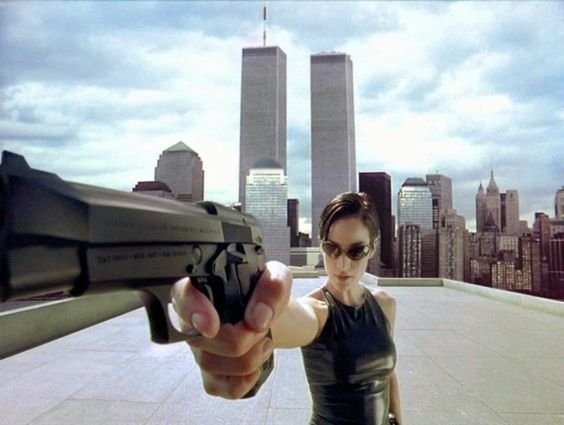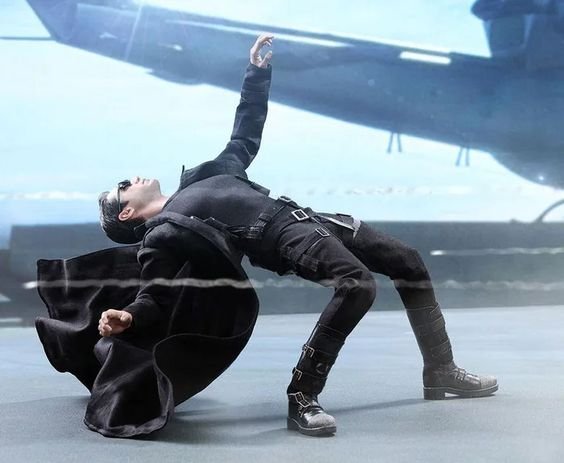Avant-Apocalypse: Do Androids Dream of Rick Owens?
I don’t fuck much with the past, but I fuck plenty with the future. As we talk about fashion, we’ve seen a pattern in designers and trends taking inspiration from the past, leaving consumers with a feeling of nostalgia of what once was. Sometimes we’re even left to wonder if anything entirely new is ever coming out.
Looking at one of fashion’s latest trend surfacing from the internet, we’re led to believe that for once we’re being projected in the future rather than falling back into the 80s or 70s: avant-apocalypse, as the name says, tells us a story of garments (not so) ready made for a dystopic reality about to come. Or perhaps, a reality that was supposed to come and that now has ended up being our present one.
Architectural layering, sheer fabrics, subversive basics that have lost utility in their deconstruction, non-colored colors, and textured fabric define the look of avant-apocalypse fashion.
Marine Serre - referring to her summer collection in 2020 - called it futurewear, by stressing the approach fashion would have to take in a reality disrupted by a socio-economic crisis: there’s a survival mindset in the clothes we wear. Still, it’s clear of much of a paradox it is to think of haute couture under a utilitarian light when the industry is the epitome of elitism.
Dystopia is defined as a fictional genre set into a slightly altered reality where something has gone irreparably awry and the population has to deal with the consequences of it. Although there is still distance been fiction and reality, we can often see the latter described with dystopian terms even through outlets that should be as neutral as possible, like news channels.
Past examples of this feeling of disillusionment we’ve seen already in the punk movement of the 70s, when anti-establishment feelings and the fear of the absence of a future were spreading amongst youth subcultures.
Even more in the 90s, UK creative collectives gathered to protest against the increased CCTV state surveillance by the government and the on-going climate crisis, especially air pollution.
These are all issues that we still face today, but that have been quelled as they’ve become part of the background noise of our daily life.
The trend of avant-apocalypse draws inspiration from the fashion currents that have been circulating in the last few years – the avant-garde anti-fashion movement, love for archive pieces, cyber-punk culture –, and plenty are also the cultural references adopted from dystopian cinema and literature.
Then again, this trend has clear ties with tech wear and military inspired garments but stripped from their core utilitarian purposes: we can often find pieces with unusual proportions tailored wrongly to make bodies look less human.
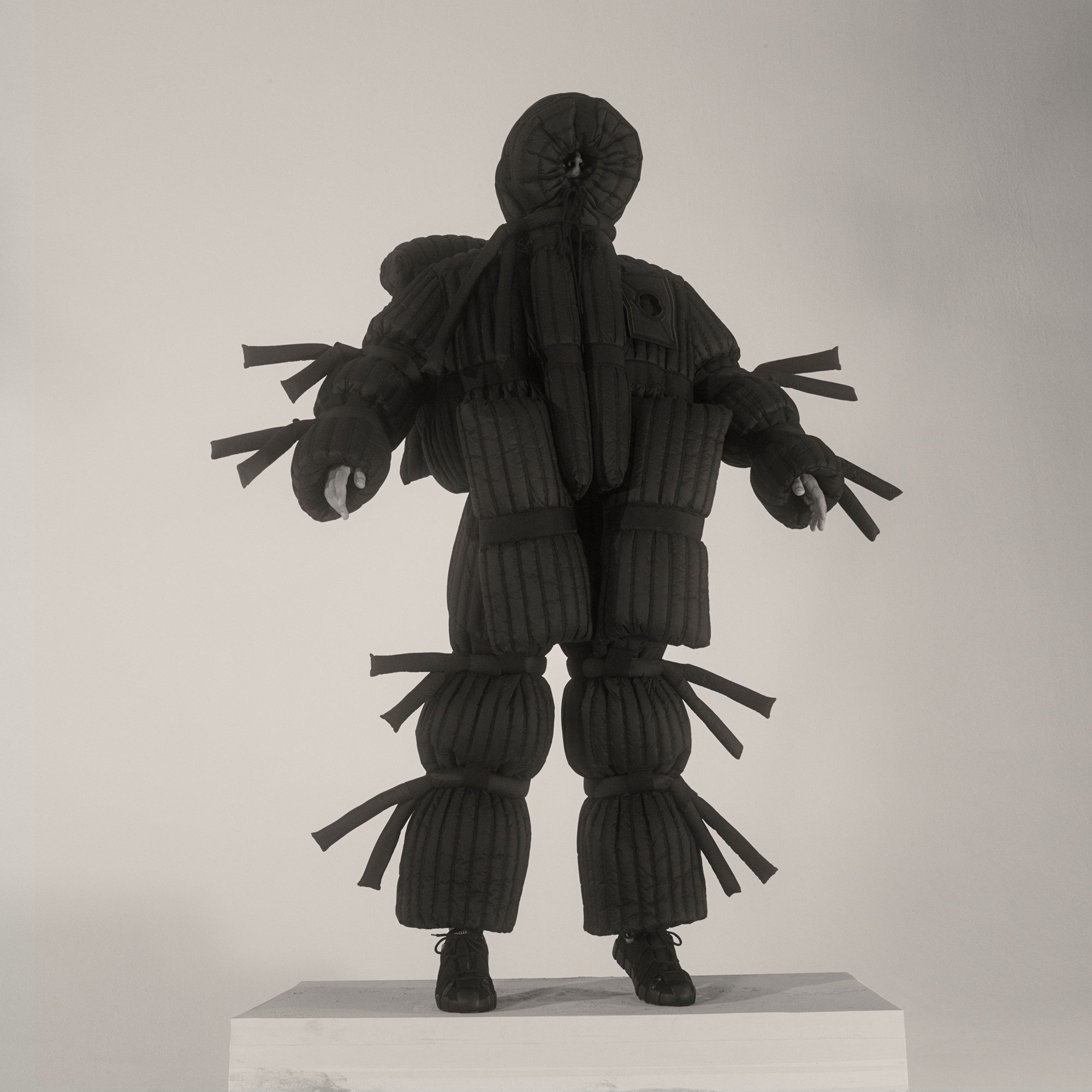
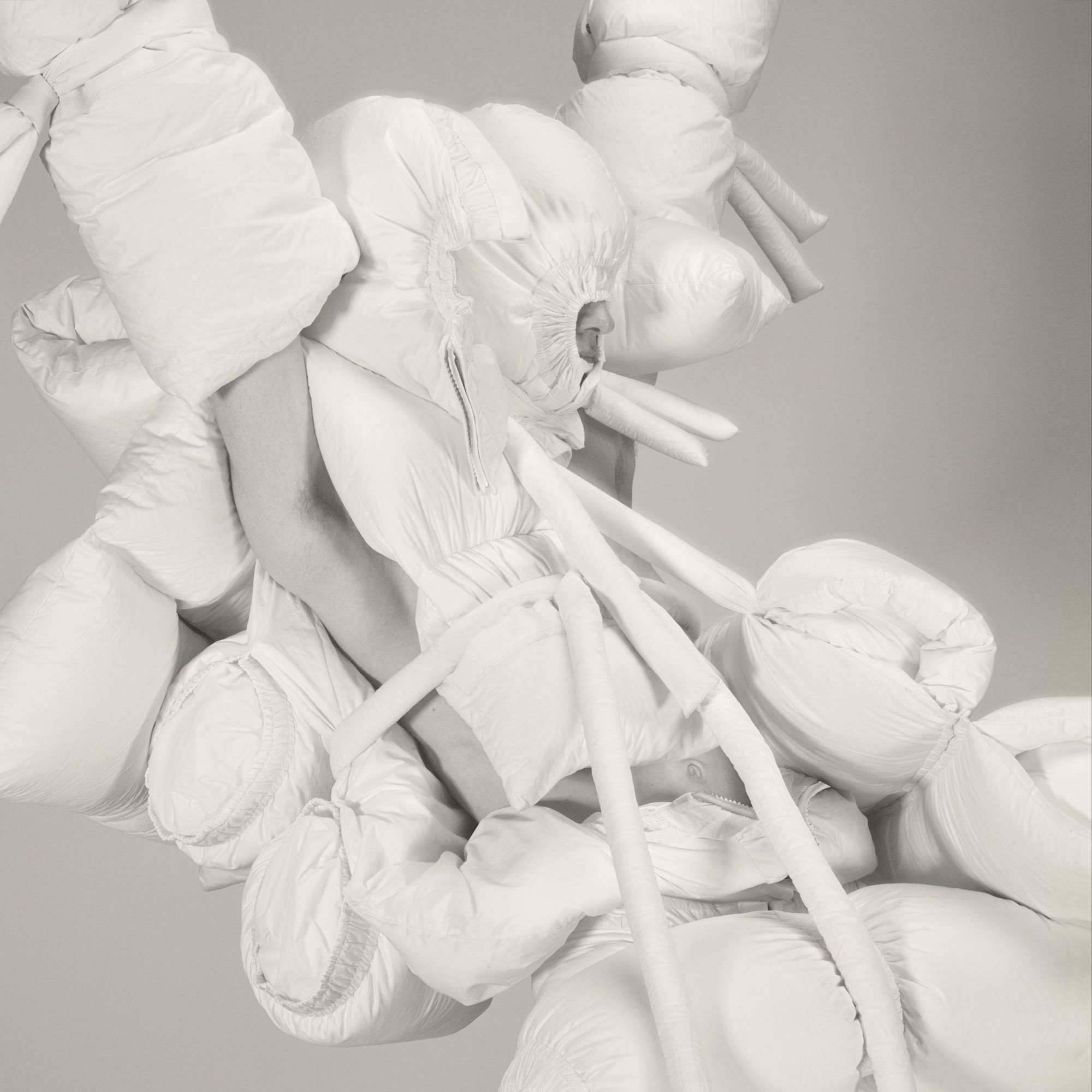
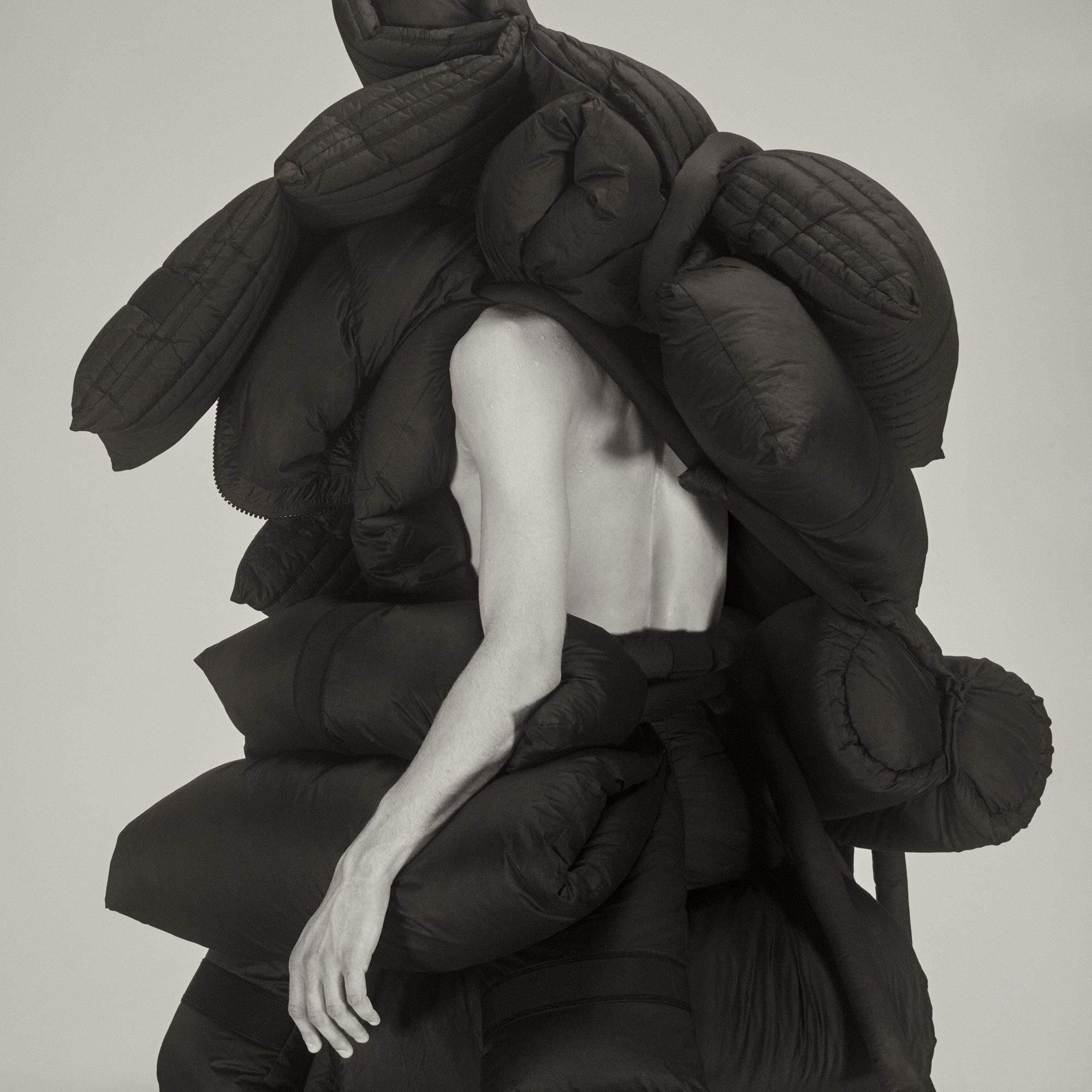
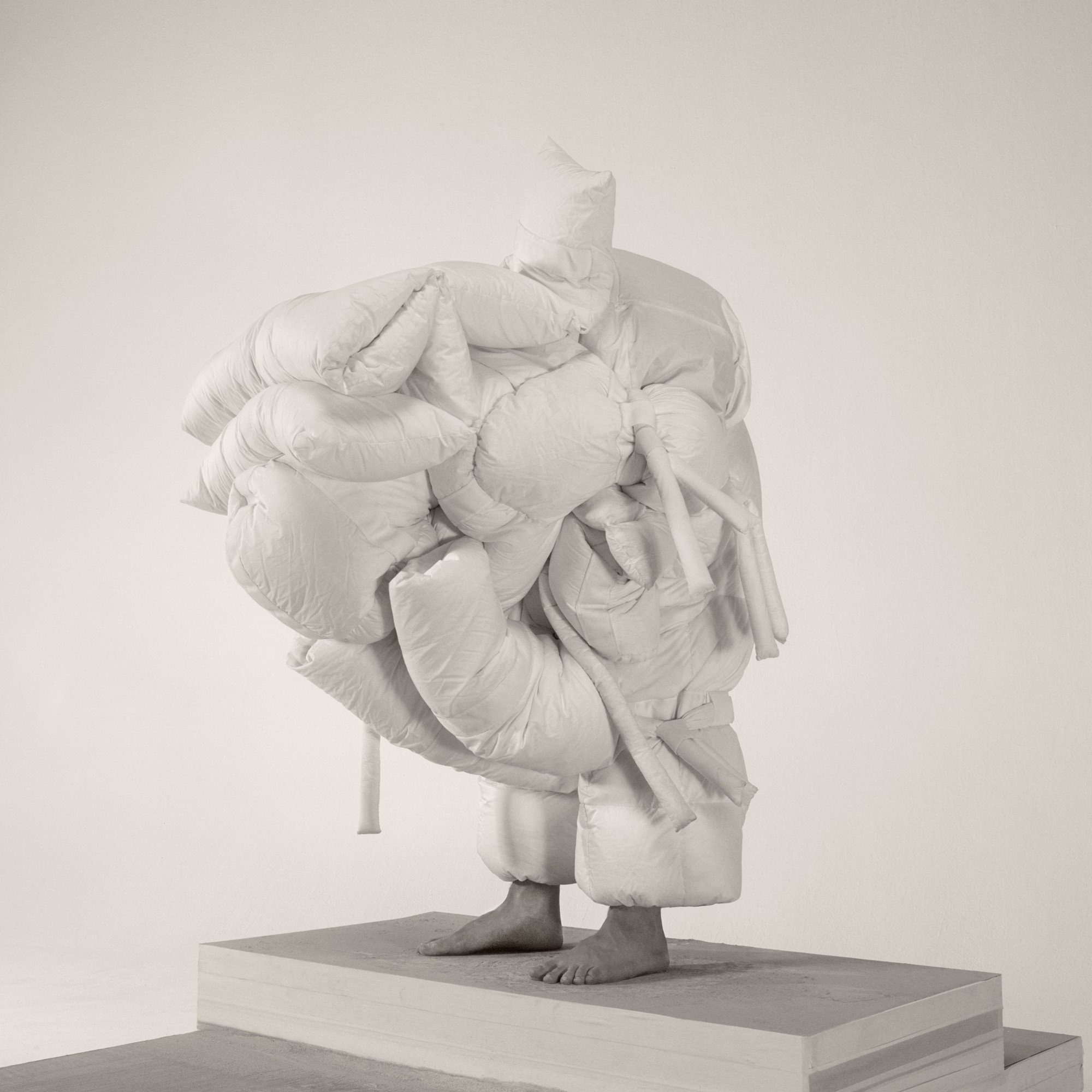
Craig Green x Moncler Genius
There’s always been a cult following for designers with a distinctive look that are now being re-discovered by younger generations once again. Rick Owens, Helmut Lang, Yohji Yamamoto just to name a few: the fashion industry turnover is relentless, so brands with a consistent vision like the aforementioned will get pushed under the spotlight from time to time until they lose their momentum, at least for the passing consumer.
But the thing about good ideas is that they never really go away. It just might take some time before they’re rediscovered or become culturally relevant once more.
When we scroll through online fashion blogs and forums, it’s not hard to find the aesthetic that is now being appreciated by a mainstream audience on archives dating back to 2015/2016. At this time, the main idea was to juxtapose high and low aesthetics together in order to elevate both: for instance, a glamorous high-end piece of clothing grounded in a dystopian or brutalist context.
By now, it should be clear that avant-apocalypse fashion isn’t much of the novelty it first seemed to be. Still, this trend is definitely resonant with the long term crisis we’ve been facing, enhanced even more by the pandemic of the last two years: fear and anxiety coming from the realization of Man’s fragility in front of the many catastrophes we have no control over aren’t a newly found sentiment, it’s only that now our fears are becoming increasingly concrete.
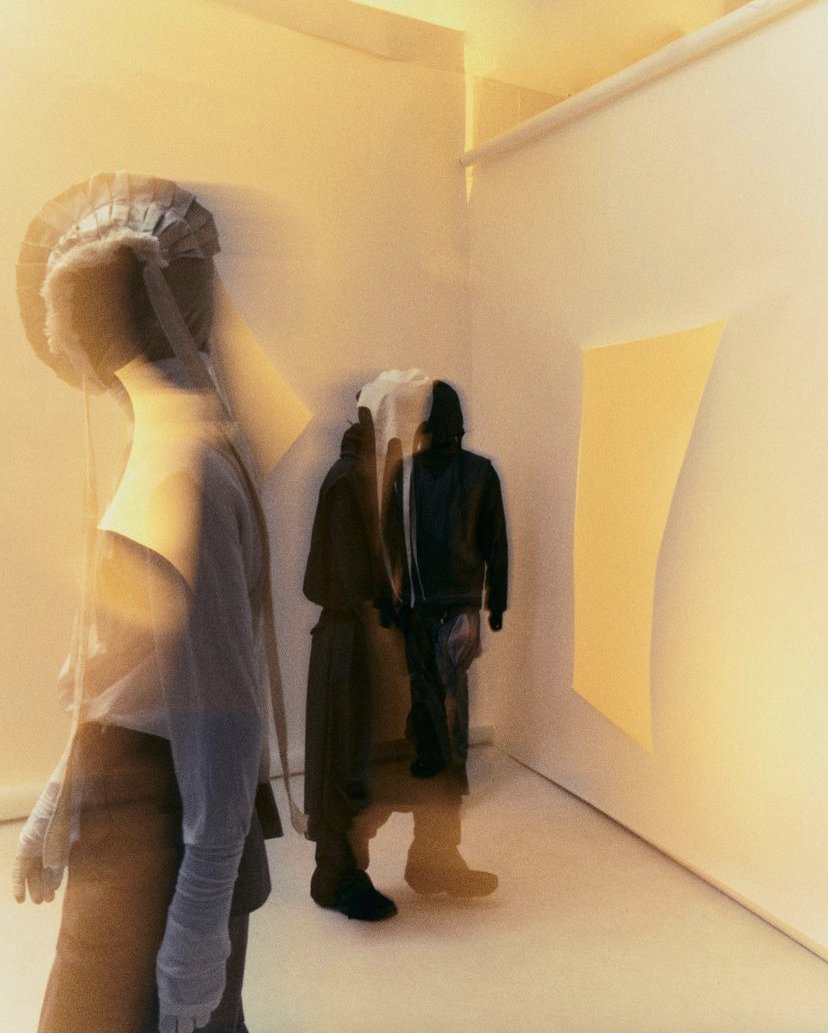

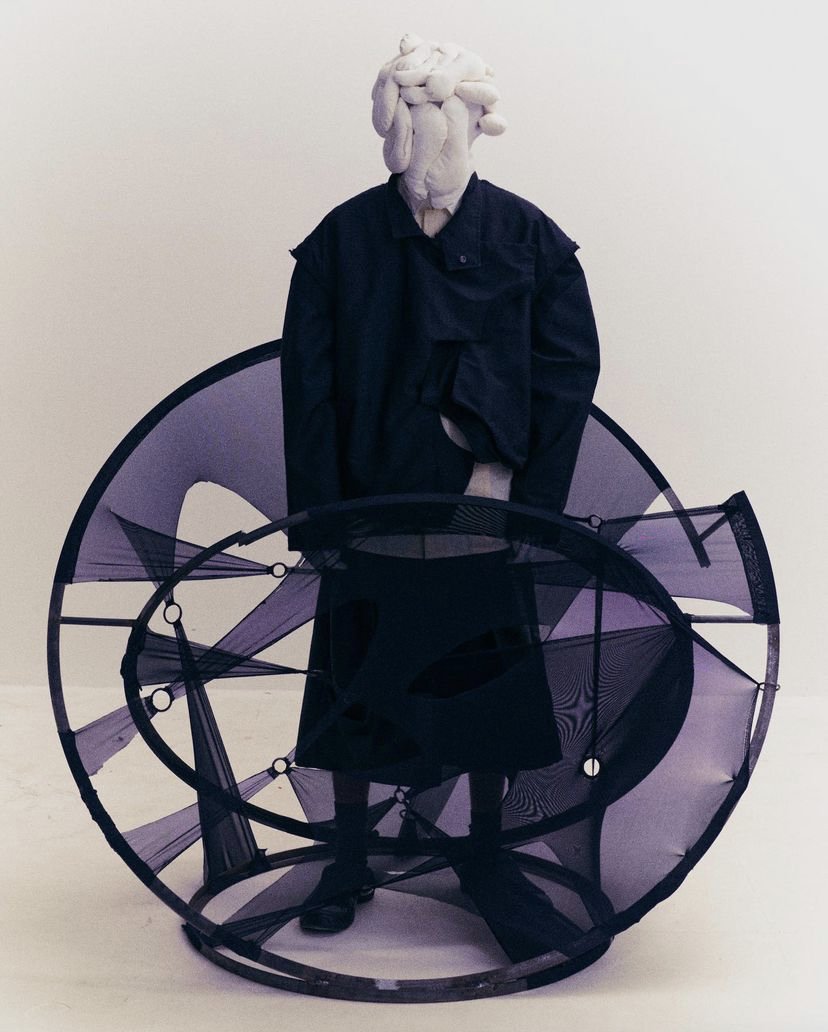
æenrmoùs SS 2022
For instance, a popular item within the avant-apocalypse trend - and that is definitely a reflection of what is currently happening – is the use of headwear and accessories that cover almost entirely the face. From balaclavas, huge scarfs, to obnoxiously loud hats. Obviously, our first connection would be to the pandemic and the necessity to wear face masks. But then again, covering our head is also an act of defiance against the pervasive state of surveillance we’ve fallen into: face recognition, camera recordings in public and private spaces.
Ends Repair
Many so-called dystopian fashion names are essentially streetwear-like brands offering clothing styles that are hard to wear and that make our bodies feel resilient against an uncertain present.
If we were to find one designer to credit as the main inspiration for this new fashion trend, then that would be Rick Owens, dubbed as the Lord of Darkness.
Ever since creating his brand in 1994, the designer’s controversial choices marked his brand as one of the most radical out there. His signature post gothic look, born from the decay of Hollywood Boulevard – in the words of Owens himself as he is from Southern California, can be easily recognized without any logo but simply by a favorable use of the color black, and the unusual brutalist silhouettes of his designs.
Owens’ aesthetic has an element of esoteric primordiality in it, along with draperies and pleats covering the body in architectural forms. This contrast is what defines the brand in its purest form.
[With shows coming back after the pandemic], everyone is going to want to show that they are stronger than ever, that they're more powerful than ever. It's a little horrifying, but I get it. Nobody wants to see a humble lesson. People want to imagine that everything's going to be fine, and that we've got it all under control.
In a way, it seems that Owens recognized the progressive decay of the world and simply decided to gaze upon it rather than delivering the unkeepable promise of a better future.
This can be seen in one of his last collections for Paris Fashion Week, Phlegethon SS21, where the models wore protective masks but what seemed to act as more of a shield is the haute couture pieces they were wearing: tape-thin cashmere knits, overwashed denim, platform boots, outsized silhouettes languidly clinging on the bodies.
The archaic yet futuristic look of Owens has been a key influence in many new brands that fall into avant-apocalypse.
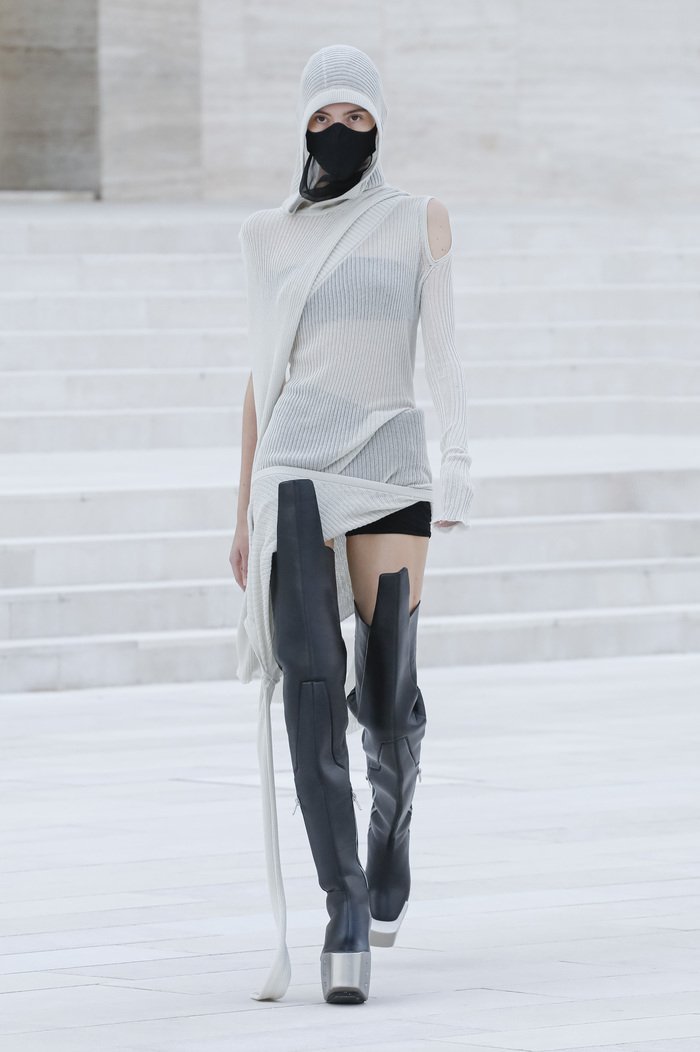
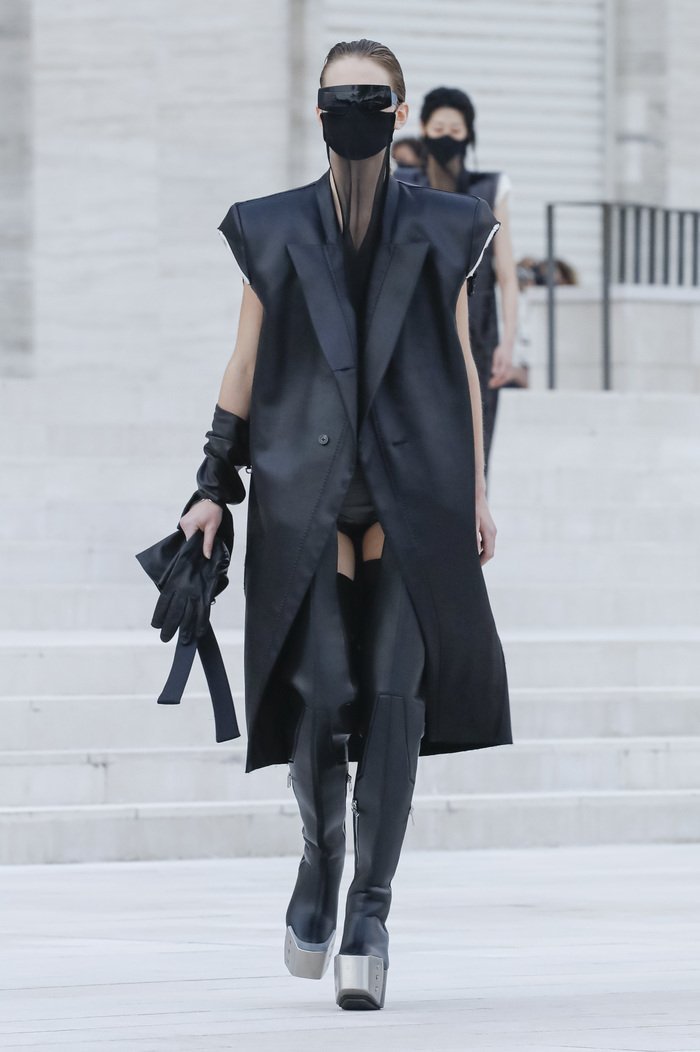

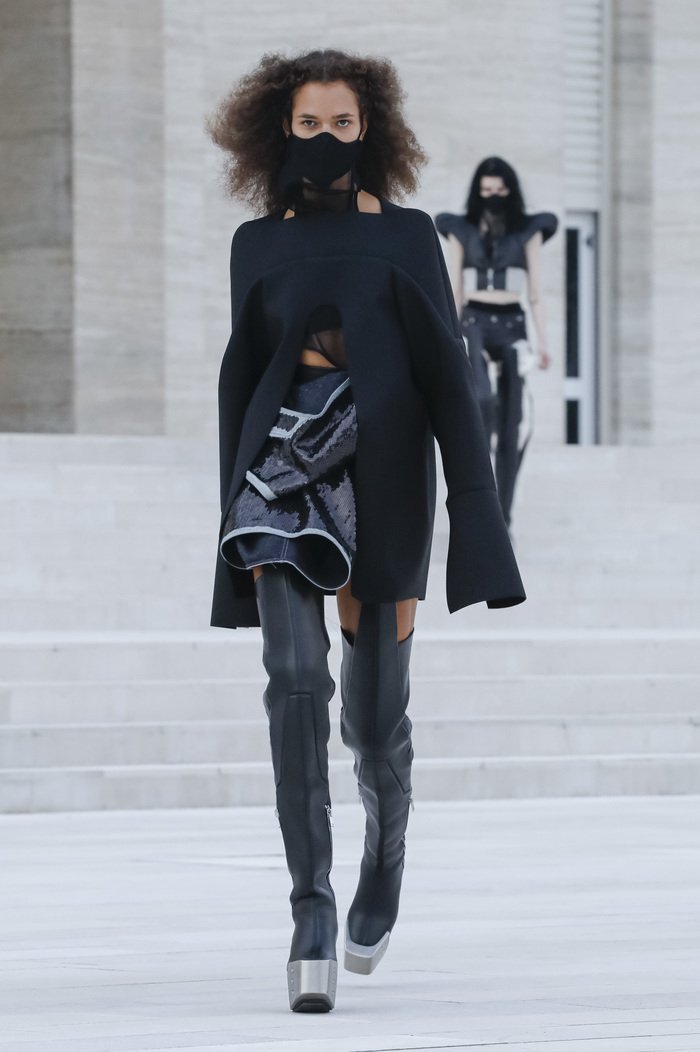
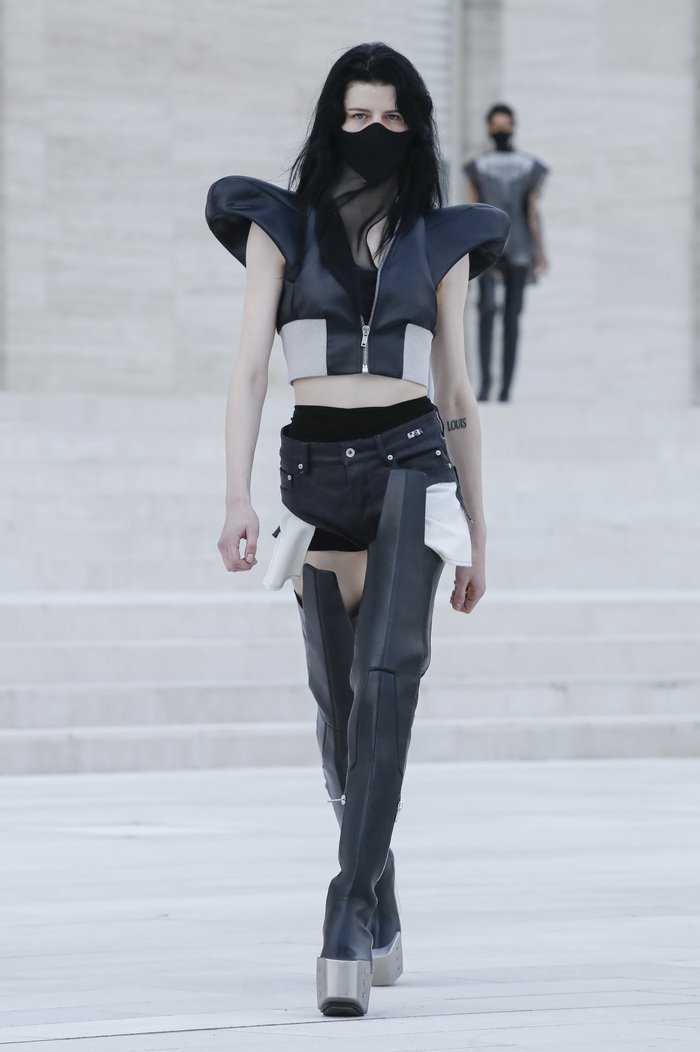
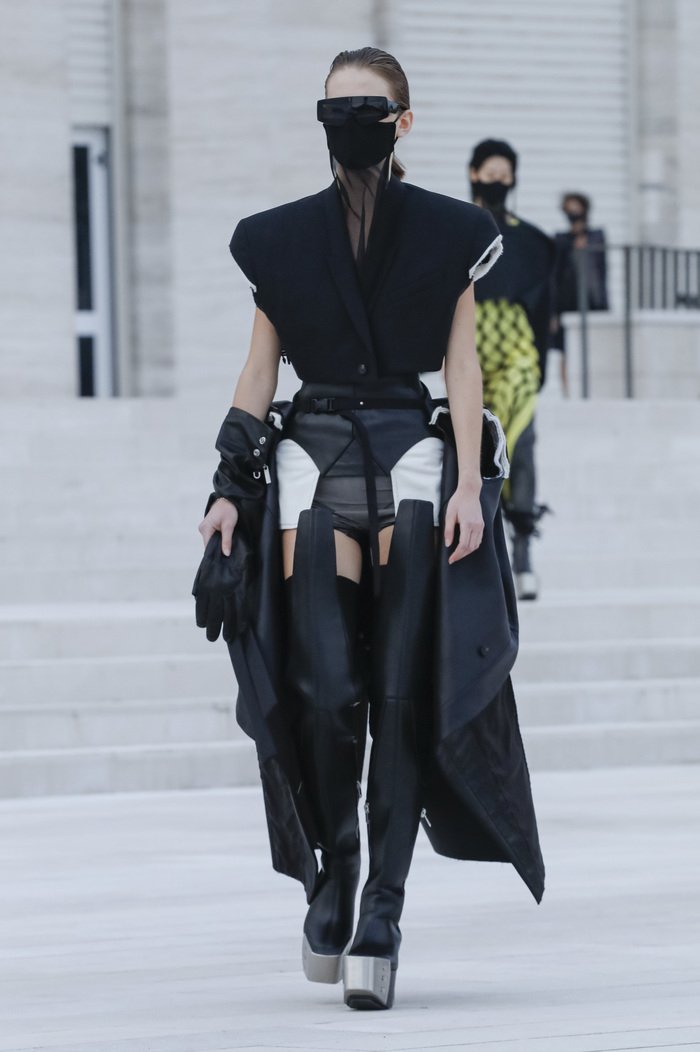
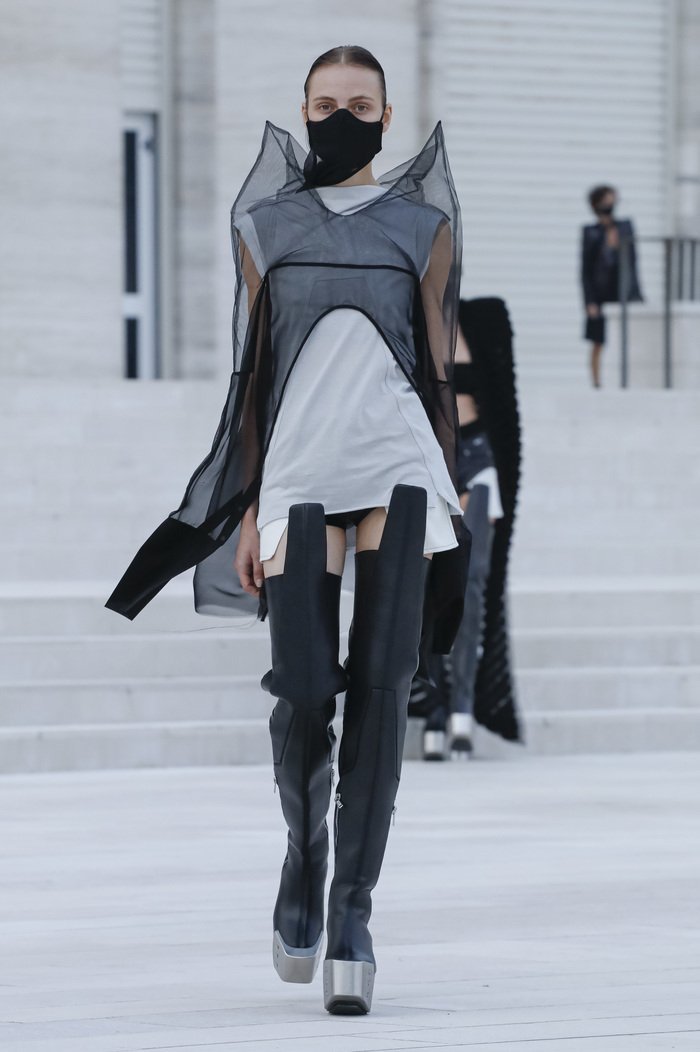
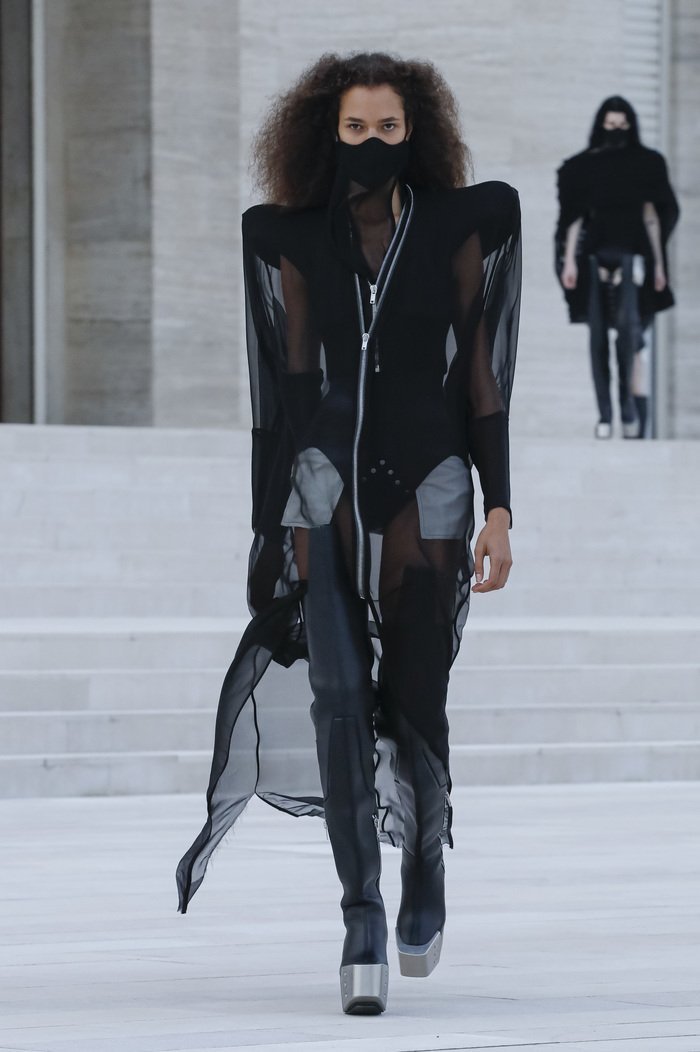

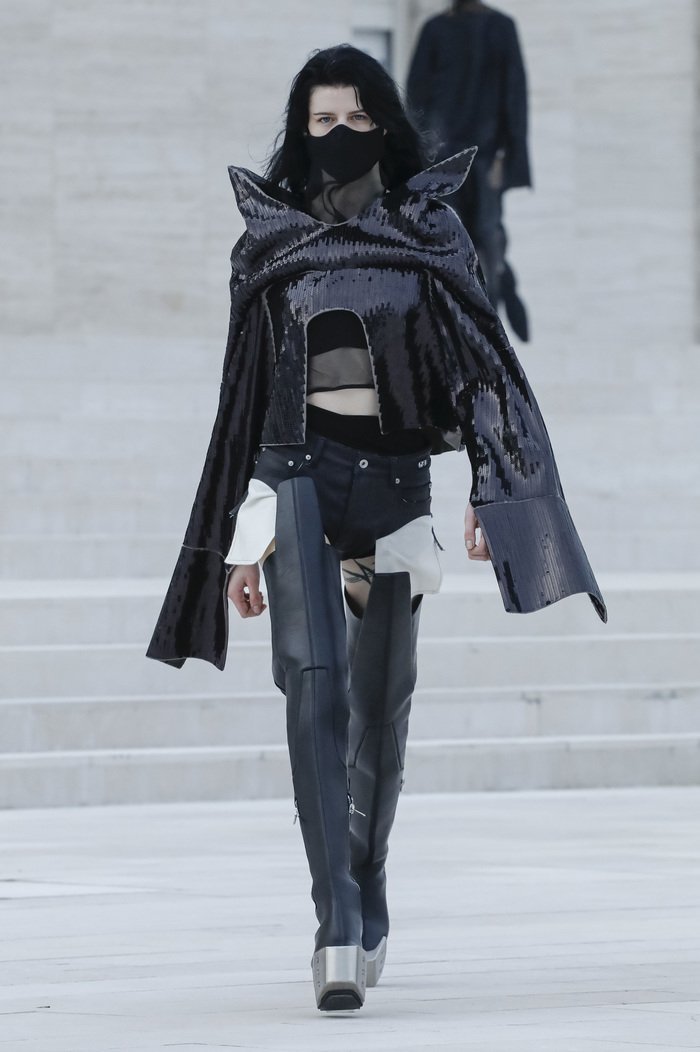
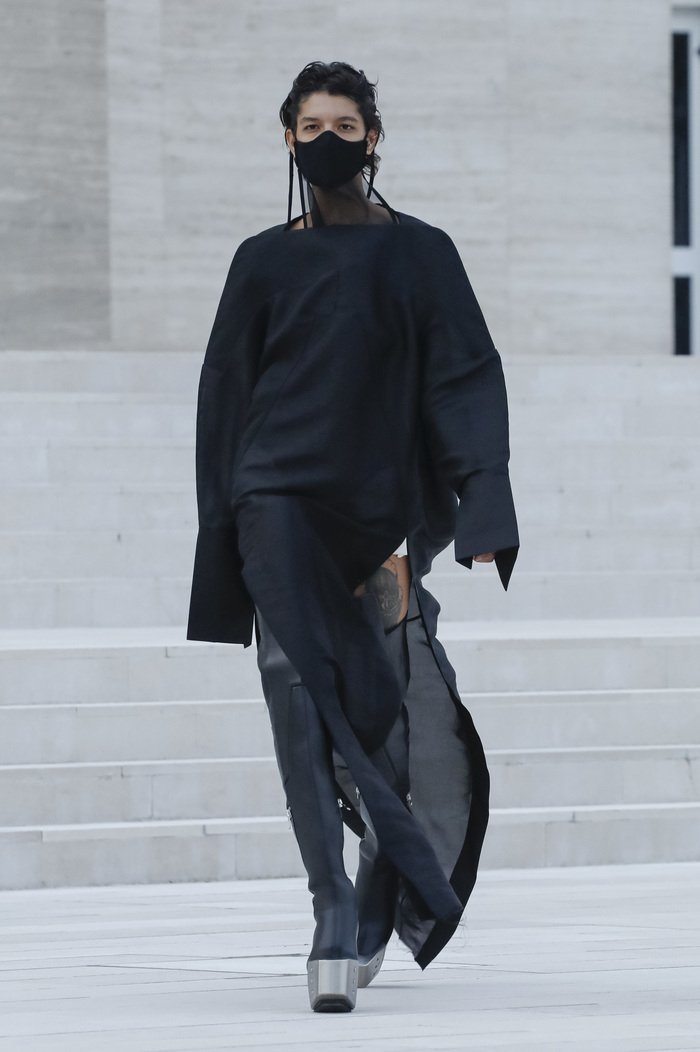
Rick Owens Spring Ready to Wear SS21, Phlegethon
A lot of the brands that fit into the definition of avant-apocalypse are born in places that aren’t considered fashion capitals. However, it might be because of this very reason that they offer a breath of fresh air from what immediately falls under the spotlight.
South Korea especially, is the country from which many brands like Hyein Seo and PAF (Post Archive Faction) were born.
Exaggerated shapes, obscuring hoods and technical textiles to combat the weather are few of the main characteristics that define Hyein Seo’s DNA.
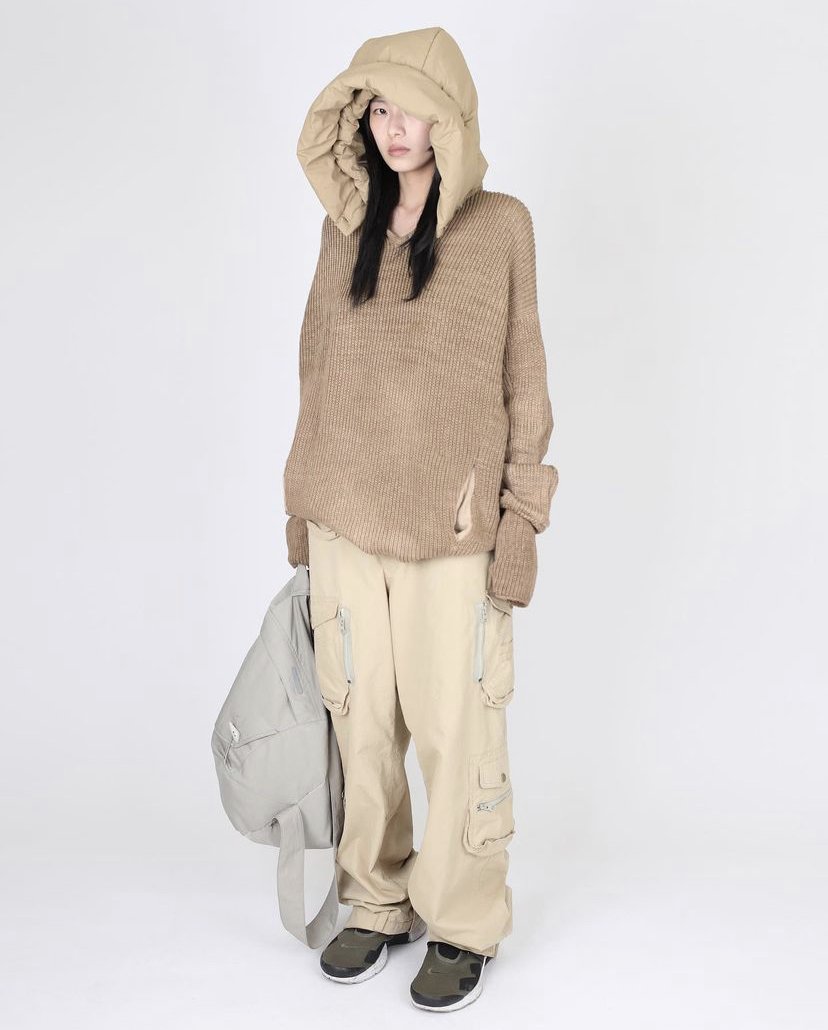

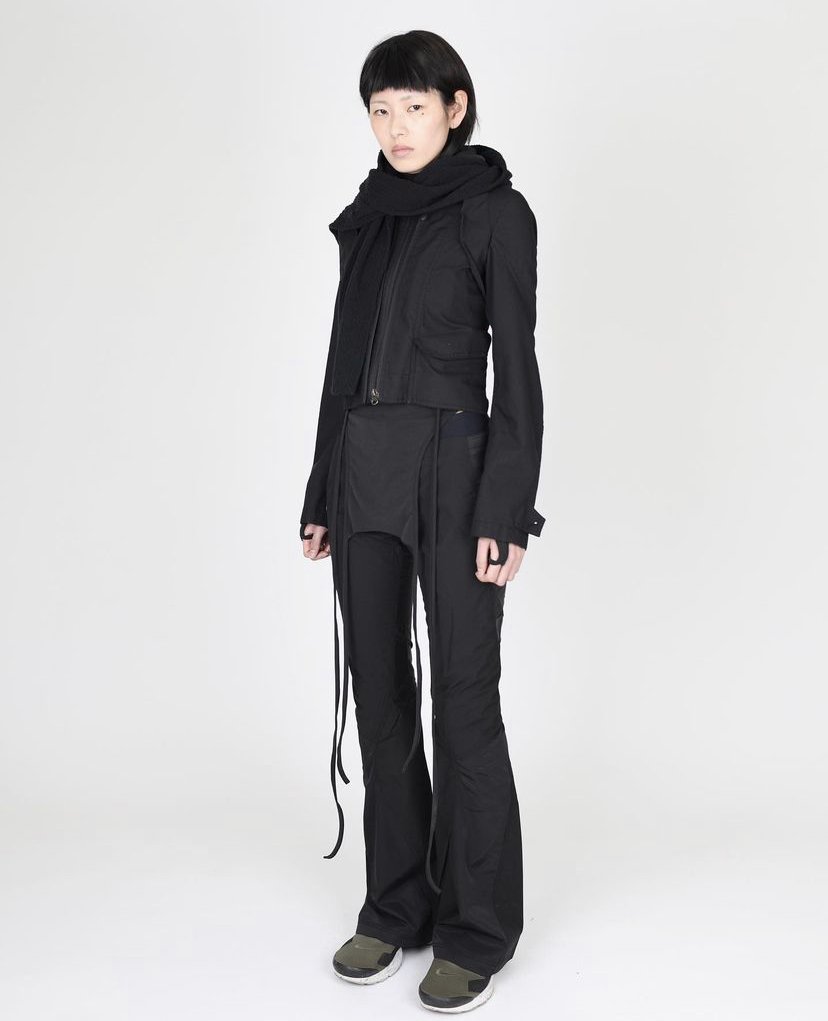
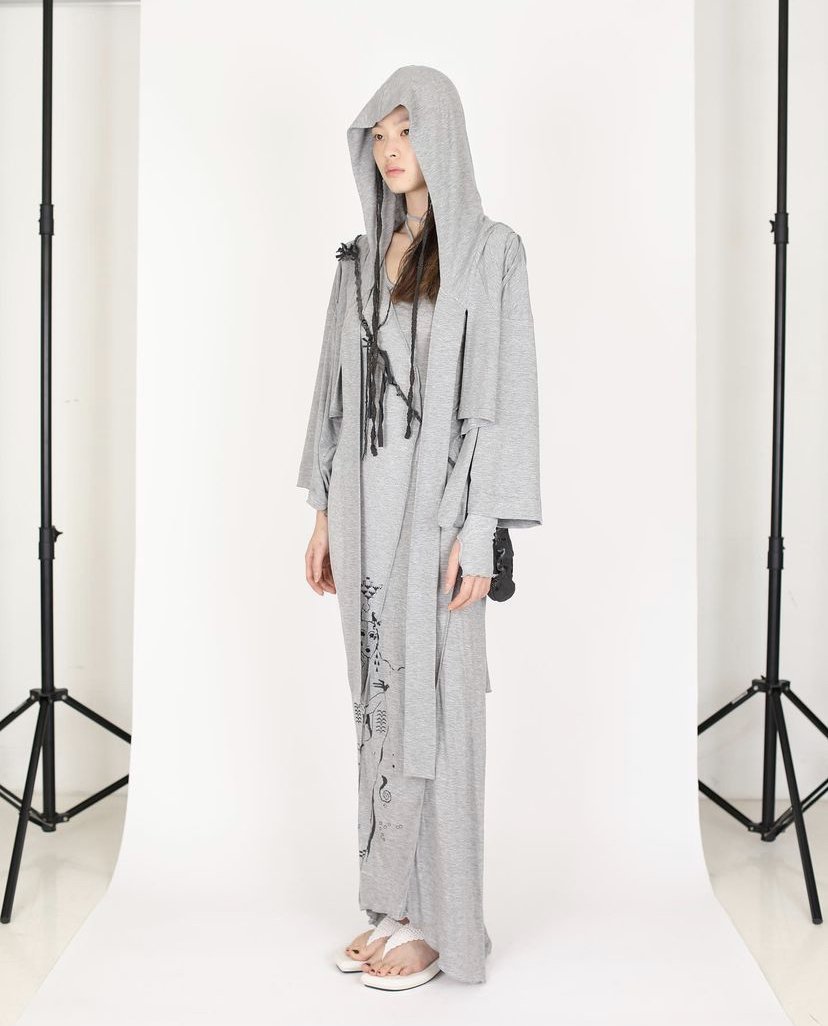
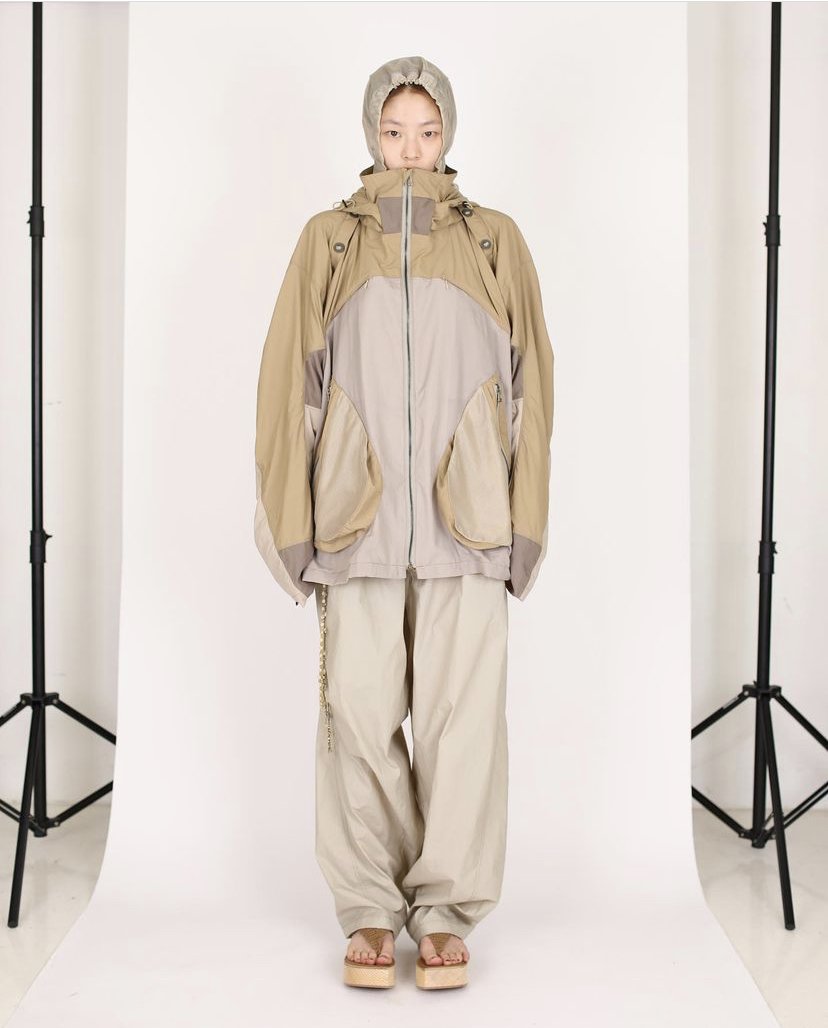

Hyein Seo catalogue
Even more interesting is the example of PAF, a collective of designers who believes in the iterations of prototypes based on continuous researching for formative elements to study the structural evolution of the garments. The brand is known for having each piece of clothing evolving on three stages, from the most basic garment (Fundamental Model), to a more intricated design (Bridge Model) starting from the first one, and then finally a final disruptive elevation (Radical Design) of the primary design.
The brand continuously re-interprets its own designs by disassembling and assembling design elements in order reconstruct the deconstructed garments.
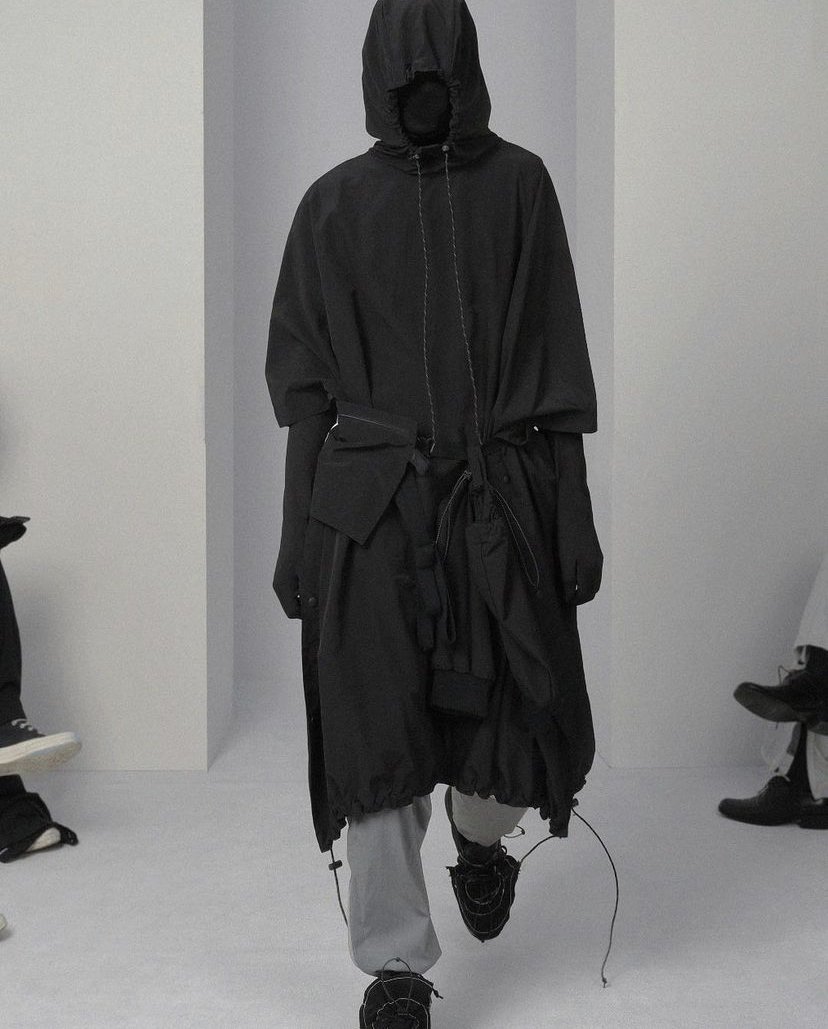

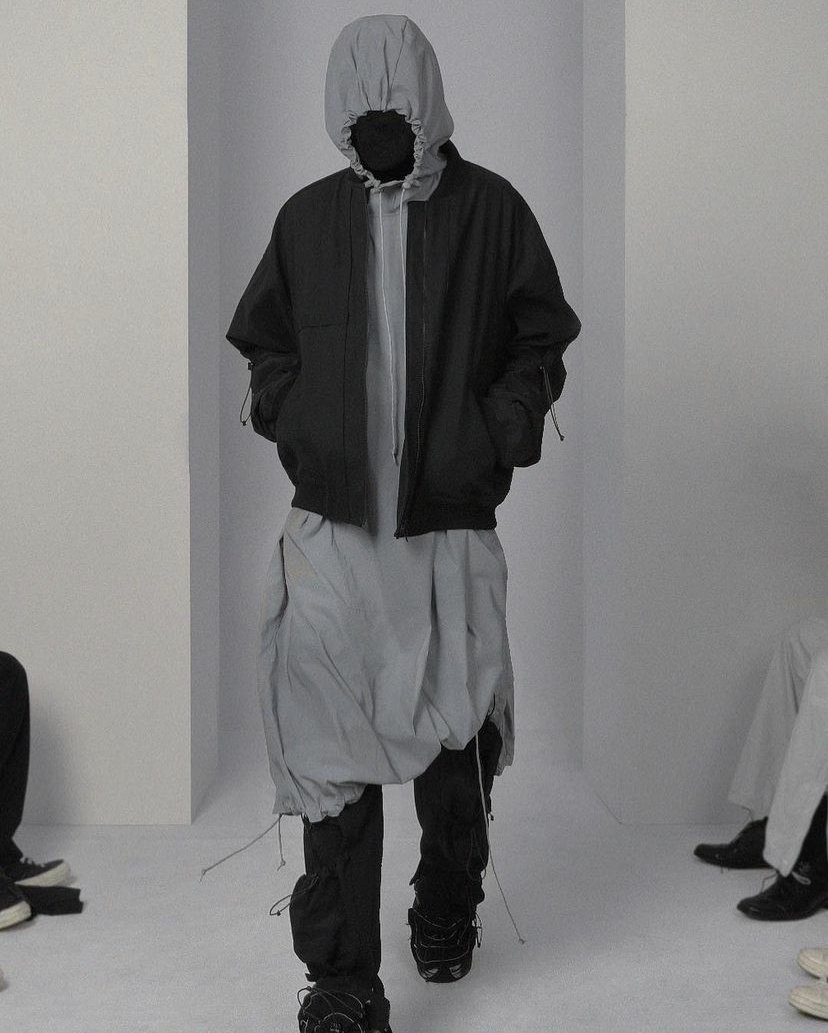
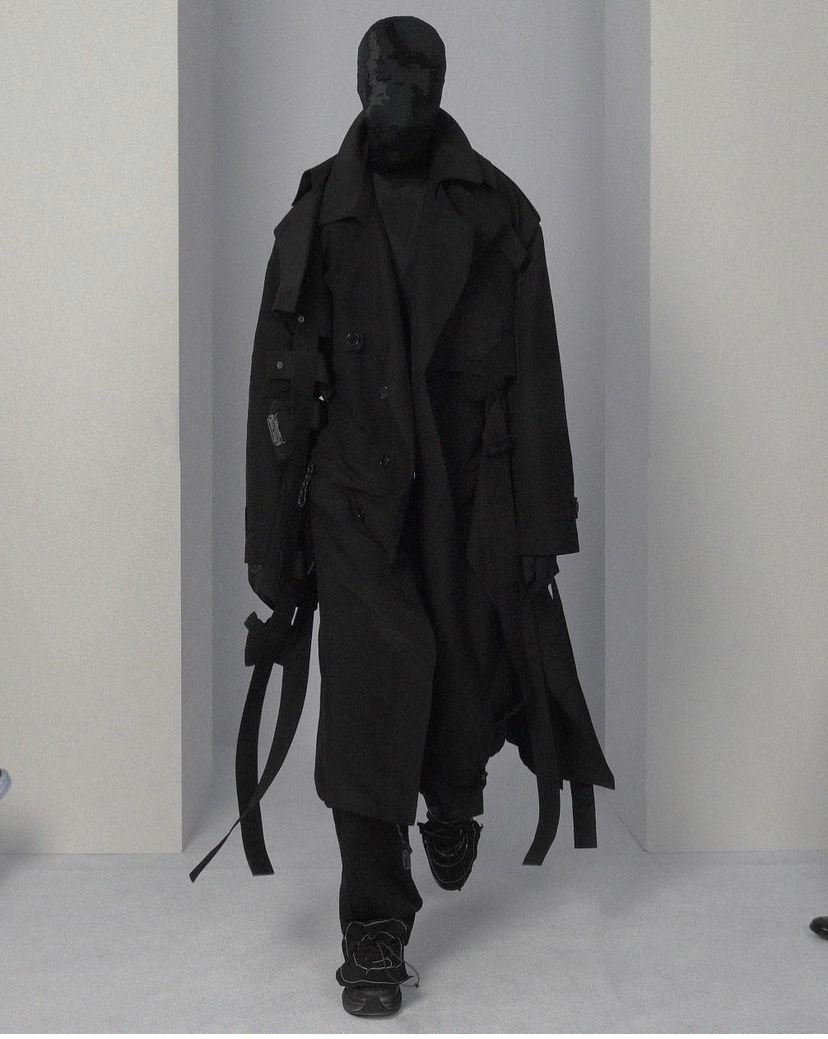

PAF fall/winter runway show in Seoul, 2018
It’s not a case that South Korea is the motherland of these brands. For a country that’s so fast-paced and technologically advanced, the trade-off is a highly competitive job market and an educational system that overpowers students’ free will in their future: fail once, and you’ll be doomed forever.
Furthermore, South Korea’s national economy is highly dependent on a few big conglomerates ruled by generations of the same family, hence a highly unstable equilibrium that has worked until now… minus a few corruption scandals. And massive pressure put on the average citizen’s shoulders. Add a consumerist culture that has long surpassed the American one and a strict social hierarchy.
No wonder the more sensitive youth feels the need to find an escape from the rigidity of a system that doesn’t benefit them. However, the artistic language chosen doesn’t run away from it, but rather tries to resist it.
PAF collection 4.0 for LVMHPrize 2021

